Overview
An ‘advanced’ SDR is an umbrella term that refers to a genre of SDR implementations that approximate the ‘state of the art’ in terms of both SDR architecture and component selection. The concept of ‘state of the art’ implies a constantly moving performance benchmark with a dynamic and ever changing end point, not easily defined. A fine point on comparative performance metrics is only helpful in limited situations. However, certain general characteristics that one might better call ‘advanced’ designs are common to modern SDR’s of certain designs. For the amateur radio hobbyist, general characteristics are usually the most important. Not all SDR’s available to the amateur radio hobbyist exhibit the very latest generation of hardware, but do approximate the state of the art well enough to be considered ‘advanced’. Advanced designs are more desirable than legacy designs. Advanced SDR’s are the preferred hardware platform for serious homebrew SDR projects.
That said, there is much learning potential and satisfying radio performance to be had from using older SDR designs that are no longer considered ‘state of the art’. Excellent examples of SDRs in this category are the Softrock and the RTL-SDR. The RTL-SDR is useful for many high frequency radio projects and is chosen as the first example of a DSP radio receiver project: RTL-SDR FM Broadcast Receiver
What is the state of the art? Modern SDR’ systems, and most of those available to experimenters and amateur radio enthusiasts, are designed primarily to meet the requirements of the wireless data communications industry. The intended user is the product development engineer, advanced engineering students, and secondarily to experimenters and the motivated hobbyist. An advanced SDR is characterized by four general characteristics: High speed A/D and D/A conversion, Field Programmable Gate Array (FPGA) DSP engines, wide data bandwidth data links, and, in certain high frequency applications, high performance RFIC analog RF front ends. The block diagram of the Ettus B200 SDR illustrates these state of the art design characteristic: high speed digital converters, FPGA, high speed data links, and sophisticated RFIC analog SDR front ends.
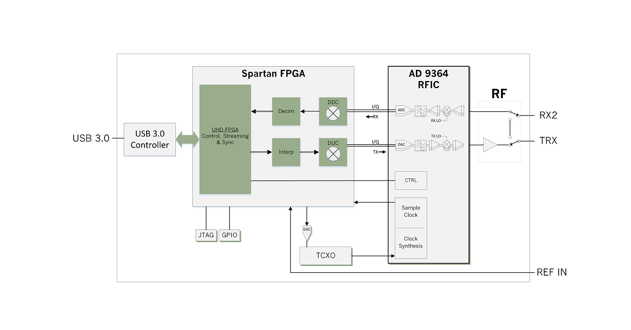
Let’s discuss each of these characteristics in greater detail and consider their implications for amateur radio homebrew projects.
High Speed Data Conversion
High speed A/D and D/A conversion translates to a large baseband bandwidth. The converters digitize the analog radio signal and present the digital data stream to the DSP for signal processing. The state of the art baseband bandwidth ranges from 6 MHz to 32 MHz in commonly available SDR’s. The wide baseband bandwidth is intended to accommodate the wide band data constellations in development for commercial data communications. Contemporary amateur radio practice is primarily narrow band in nature. For basic SDR rigs, baseband bandwidths of 6 MHz are more than adequate. For some instrumentation projects, such as a spectrum analysis tool, a wide baseband bandwidth would be more useful.
FPGA DSP
The FPGA is the work horse of modern SDR’s. The FPGA is a programmable logic engine. In an SDR application, the FPGA is the first step in the two step DSP process. The DSP software (GNU Radio) in the computer host is the second step. The digital data stream from the A/D and D/A converters is processed in the FPGA via the internal firmware quadrature modulator function to manage the data stream to the DSP function of software host (GNU Radio DSP). The FPGA manages the massive data output from the wideband digital converters to amounts manageable by the software host. The FPGA performs this DSP step in an efficient and high speed manner. The FPGA has made it possible for typical SDR applications respond in essentially a ‘real time’ manner to signals and commands, reduces the computer resources necessary for a a complete SDR implementation.
Wide band Data Link to Host Computer
The wide band data link is the USB or Ethernet interconnection between the SDR and the DSP software host. Wide band data links host the SDR’s large digital data streams, the SDR control commands to the FPGA, and GUI display functions. There is a considerable amount of data communications between the SDR and the host computer and a robust data link is important. The state of the art data link is either USB3 or Ethernet. USB2 is a legacy data not included in new designs.
Special Purpose RFICs for VHF/Microwave SDRs
The RFIC analog front end is the contemporary approach to digitizing the VHF and above RF spectrum. SDR’s intended for this part of the spectrum require an RFIC. Ultra high speed digital converters for the microwave spectrum, not available, are replaced by the single conversion analog RFIC approach. This approach is viable with modern IC fabrication and design techniques. The achievable performance level is nothing short of amazing. These RFIC’s, designed for digital data communications systems exhibit high receive gain, very low noise figures, stable low phase noise frequency synthesizers, and highly linear transmitters. Most advanced SDRs with RFIC front ends have dual transceivers available. The dual transceiver capability makes for very interesting and innovative approaches to microwave SDRs:10 GHz SDR Transceivers using the Dual Transceiver Option All of these characteristics are performance characteristic that minimize the bit error rate (BER) in digital communications systems, and, incidentally, are perfect for amateur radio applications.
Summary
How do these advanced or state of the art characteristics translate into practical homebrew SDR for amateur radio? The primary advanced feature is the FPGA. The FPGA streamlines the entire DSP process and makes the resultant SDR durable, computationally economical, and easy to use. The RFIC is essential for a flexible VHF/Microwave SDR application. The wide band data link is not very important for most amateur radio applications. A USB2 data link is marginal for ham use but entirely serviceable. Certainly not a show stopper when it comes to considering which SDR hardware to purchase. Greater data bandwidth is generally better than less bandwidth. The high speed digital converters are somewhere in the middle, nice but not necessary for amateur radio narrow band SDR applications. As it turns out, high speed digital converters are designed into the foundational design of the latest range of available advanced SDR’s. It is only the earliest versions of advanced designs where the digital converters have limited bandwidth.
Below is a partial list of advanced SDR Hardware available and affordable to the amateur radio hobbyist:
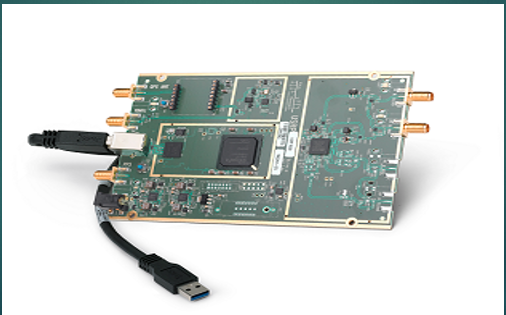
https://www.ettus.com/
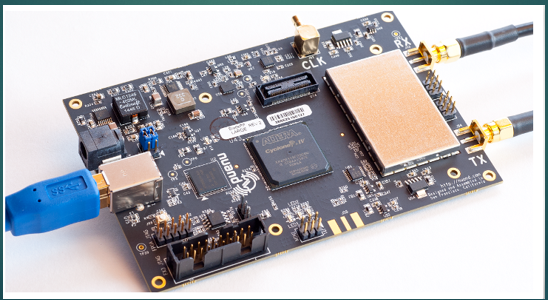
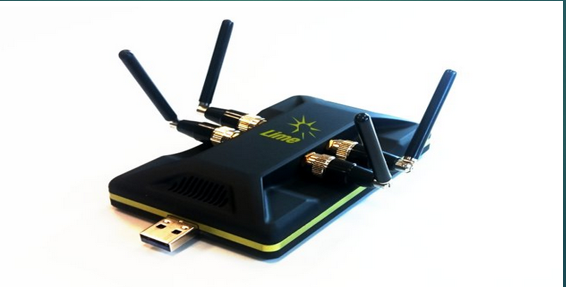
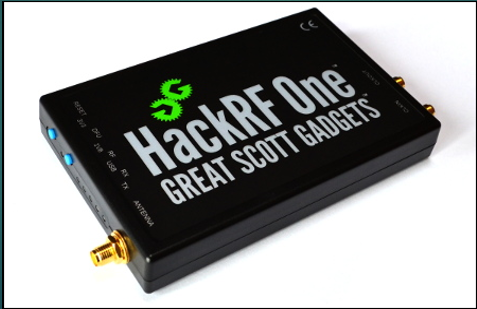
Link to Terms and Abbreviations: Terms and Abbreviations
Link to Home Page: Home Page